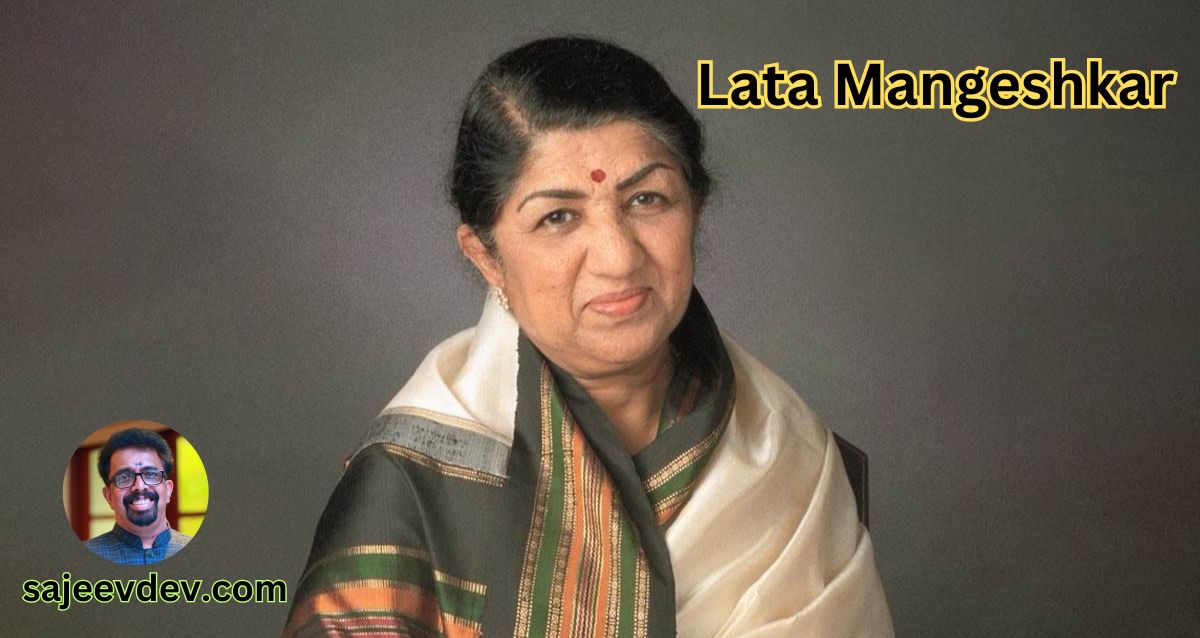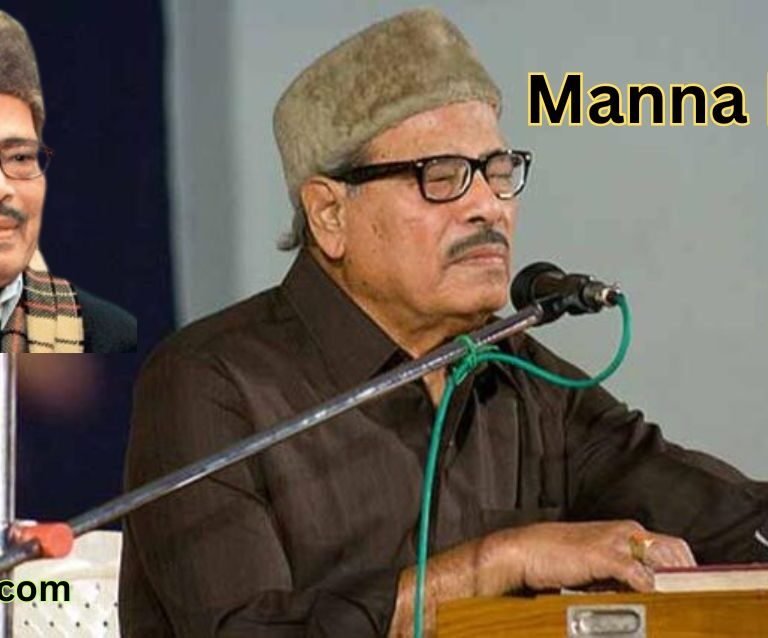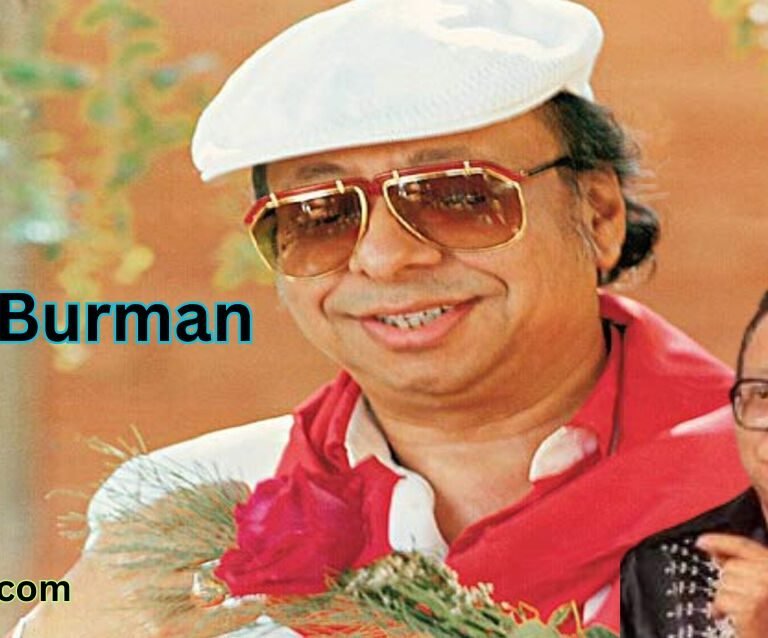Lata Mangeshkar the legend
Lata Mangeshkar, born on September 28, 1929, and passing away on February 6, 2022, holds an unparalleled position in the annals of Indian music. Revered as the ‘Nightingale of India,’ she left an indelible mark on Indian cinema and music that transcended generations. Beginning her career at a tender age, Mangeshkar’s melodious voice became synonymous with Bollywood’s golden era. Over her prolific career, spanning seven decades, she contributed to the soundtrack of countless lives, recording thousands of songs in over 36 Indian languages, including Hindi, Marathi, Bengali, and others.
Her extensive oeuvre is characterized not just by its volume but also by its emotive depth and versatility. Lata Mangeshkar’s music traversed a vast spectrum, from poignant ballads to peppy tracks, each rendered with a unique touch of her unparalleled vocal finesse. Her exceptional talent garnered her innumerable accolades, making her an integral part of India’s cultural and musical heritage. The voice that resonated through millions of homes was also a medium through which countless emotions and stories were portrayed, leaving a lasting legacy.
Mangeshkar’s contribution to Indian music was recognized not only with national awards but also international acclaim. Her voice practically defined the soundscape of Indian cinema for a better part of the 20th century. It’s no wonder she was often the first choice for leading composers and directors whenever a heartfelt or haunting tune was required. Lata Mangeshkar wasn’t just a singer; she was an institution, a sentiment echoed through the legendary title ‘Nightingale of India,’ a moniker that rightly encapsulates her celestial voice and timeless artistry.
As we delve deeper into her storied career, it becomes evident that her influence in shaping Indian music and the film industry is immense. The legacy left by Lata Mangeshkar continues to inspire and enthrall new generations of musicians and fans alike.
Early Life and Initial Journey in Music
Lata Mangeshkar, celebrated as the Nightingale of India, was born on September 28, 1929, in Indore, India, into a family with a rich musical heritage. Her father, Pandit Deenanath Mangeshkar, was a classical singer and theater actor, which ingrained a profound musical influence in Lata from an early age. The family atmosphere was steeped in classical music, shaping her early appreciation and understanding of this art form.
Despite the nurturing environment, Lata’s journey in music was marked by significant challenges. At the tender age of 13, she faced the devastating loss of her father. This tragedy thrust young Lata into the role of a breadwinner for her family, propelling her to take her first professional steps into the music industry. Her initial foray was not easy; she encountered numerous rejections and struggled to find her footing in a competitive and often harsh industry.
Her first opportunity in Bollywood came with a debut song for the Marathi film “Kiti Hasaal” in 1942. Although this beginning was modest, it was a pivotal moment in her life. Gradually, her distinct voice began to capture attention, leading to more opportunities in Hindi cinema. One of her early notable songs was “Aayega Aanewala” from the movie “Mahal” (1949), which catapulted her into the limelight and established her as a promising playback singer.
Despite persistent criticism and competition, Lata’s unwavering dedication and unique vocal talent steadily earned her recognition. She tirelessly worked towards perfecting her craft, often recording numerous takes to achieve the desired perfection. Her relentless pursuit of excellence in every rendition set a high benchmark in the music industry.
These formative years, filled with trials and breakthroughs, laid a robust foundation for Lata Mangeshkar’s illustrious career. They also exemplified her resilience and indomitable spirit, characteristics that would continue to define her legacy in Indian music.
Rise to Stardom
Lata Mangeshkar’s journey to stardom commenced in the late 1940s, a period that laid the foundation for a meteoric rise in the Indian music industry. She began her career at a young age, lending her voice to numerous projects that showcased her burgeoning talent. However, it was in 1949 that Lata truly began to gain widespread recognition. This year marked a turning point with the release of the film Mahal, wherein her song “Aayega Aanewala” captured the hearts of millions, cementing her place as a prominent playback singer.
Integral to her ascent were the collaborations with several illustrious music composers who played a crucial role in honing her skills and amplifying her presence in the industry. Legendary composers like S.D. Burman, Naushad, and C. Ramchandra were instrumental in shaping the trajectory of her career. Their innovative compositions, matched with Lata’s ethereal voice, resulted in timeless melodies that remain revered to this day.
Another significant milestone in Lata Mangeshkar’s career was her association with the composer duo Shankar-Jaikishan and lyricist Shailendra. Their collaboration yielded several chart-topping hits in the 1950s, further solidifying her dominance in the playback singing domain. Notable songs from this era include “Rasik Balma” from Chori Chori and “Jiya Beqaraar Hai” from Barsaat. Each song not only showcased her versatile vocal range but also resonated deeply with the audience, establishing a lasting legacy.
Lata’s unique ability to imbue emotions into her songs made her the preferred choice for leading actresses of the time, bridging the gap between on-screen performances and musical expression. Her dedication and prolific output in the subsequent years ensured that she remained a vital part of Indian cinema’s golden age. As a result, Lata Mangeshkar’s rise to stardom was not merely a fleeting moment but a foundational era that heralded numerous accolades and an enduring legacy.“`html
The Golden Era of Bollywood and Lata’s Contribution
The Golden Era of Bollywood, spanning roughly from the late 1940s to the early 1970s, witnessed an unparalleled synthesis of musical brilliance. At the very heart of this era, Lata Mangeshkar’s contribution remains monumental. Known as the “Nightingale of India,” her voice became synonymous with the timeless soundtracks of Hindi cinema. Her collaborations with iconic composers like S.D. Burman, R.D. Burman, and Shankar Jaikishan not only bear testament to her extraordinary talent but also signify a unique partnership that defined an age.
S.D. Burman’s intricate melodies found their perfect vessel in Lata’s ethereal voice, producing unforgettable tracks that continue to resonate. Whether it was the soulful “Raina Beeti Jaye” or the haunting “Aaj Phir Jeene Ki Tamanna Hai,” each song highlighted a different facet of her vocal prowess. Similarly, her work with R.D. Burman added a contemporary flavor while maintaining her classical roots, resulting in evergreen hits like “Tere Bina Zindagi Se” and “Meri Bheegi Bheegi Si.” The magic of Shankar Jaikishan was perhaps best encapsulated through Lata’s renditions of classics such as “Ghar Aaya Mera Pardesi” and “Tera Jana.” These collaborations underscore not just her versatility but also her ability to adapt to the evolving musical landscape of Bollywood.
Lata Mangeshkar’s versatility enabled her to lend her voice to a plethora of actresses, making her the voice behind generations of Bollywood heroines. From Nargis in the 1950s, to Madhubala in the ’60s and Hema Malini in the ’70s, her ability to mold her voice according to the actress’s persona and the demands of the era is extraordinary. Such adaptability also allowed her to remain relevant across decades, making her a cherished figure in the industry for over five decades.
Lata Mangeshkar’s contribution to Bollywood’s Golden Era is not just measured by the sheer number of songs she rendered, but by the emotional depth and range she brought to each piece. Her legacy within this golden timeline continues to inspire and set a benchmark for aspiring singers.
Iconic Songs and Timeless Classics
Lata Mangeshkar, often referred to as the Nightingale of India, has gifted the world with numerous timeless classics that resonate across generations. Her soulful renditions have defined the very essence of Indian cinema and continue to evoke deep emotions within listeners. Among her innumerable hits, certain songs stand out for their unparalleled magic and enduring appeal.
‘Ajeeb Dastan Hai Yeh‘ from the film Dil Apna Aur Preet Parai (1960) is one such song. Composed by the legendary Shankar-Jaikishan duo, this melancholic melody beautifully captures the complexities of love and heartbreak. The poignant lyrics penned by Shailendra and Lata’s emotive voice created a powerful synergy, making it an unforgettable experience for audiences. This song’s haunting quality and depth have firmly etched it into the annals of Indian music history.
Another masterpiece, ‘Lag Jaa Gale‘ from the film Woh Kaun Thi? (1964), remains one of her most beloved songs. This evocative track, composed by Madan Mohan, perfectly complements the film’s mysterious and suspenseful storyline. The sublime melody and expressive delivery highlight Lata Mangeshkar’s ability to convey intimate and tender emotions, cementing her status as a virtuoso. ‘Lag Jaa Gale’ continues to be a favorite at romantic gatherings and special occasions, testifying to its timeless appeal.
‘Pyaar Kiya To Darna Kya‘ from the epic movie Mughal-e-Azam (1960) is another sterling example of Lata’s vocal prowess. Set against the grandeur of Emperor Akbar’s court, this song, composed by Naushad and penned by Shakeel Badayuni, celebrates the bold proclamation of love. Lata’s powerful rendition encapsulates a blend of defiance and romance, resonating with audiences both then and now. Its iconic status is underscored by the majestic choreography and stunning visuals, making it a hallmark of classic Bollywood.
These iconic songs exemplify why Lata Mangeshkar’s contribution to music is monumental. Through her extraordinary talent and emotional depth, she has created a timeless legacy that continues to enchant and inspire.
Awards and Recognitions
Lata Mangeshkar, often revered as the Nightingale of India, has been the recipient of numerous awards and honors that testify to her unparalleled contribution to music. Through her distinguished career spanning over seven decades, she has garnered some of the most prestigious accolades both domestically and internationally.
Among her national awards, the Bharat Ratna stands foremost. Conferred in 2001, it is the highest civilian award in India, which exemplifies the nation’s recognition of her monumental impact on Indian music. Furthermore, she has been honored with the Padma Bhushan in 1969, the Padma Vibhushan in 1999, and the Dadasaheb Phalke Award in 1989—each giving testament to her extraordinary talent and influence on Indian culture.
Lata Mangeshkar’s illustrious journey is also marked by several state and regional awards. She received the Maharashtra Bhushan Award in 1997 and the Maharashtra Ratna in 2001. Additionally, she has been bestowed the Zee Cine Award for Lifetime Achievement, the IIFA Lifetime Achievement Award, and numerous Filmfare Lifetime Achievement Awards, highlighting the industry’s deep admiration for her contributions.
Beyond the borders of India, Lata Mangeshkar has achieved notable international recognition. In 2007, France awarded her its highest civilian honor, the Legion of Honour. This acknowledgment from a foreign nation further emphasizes her global influence and the universal appeal of her voice.
Her list of accolades does not stop with these, as she has won the National Film Award for Best Female Playback Singer three times and the Filmfare Award for Best Female Playback Singer numerous times, alongside countless other regional film awards.
Each award and recognition amassed by Lata Mangeshkar throughout her career illustrates her legacy as not just a stellar singer but as an institution in the world of music. Her legacy continues to inspire generations, ensuring that her contributions to music will always be celebrated and remembered.
Lata Mangeshkar’s Legacy in Music
Lata Mangeshkar’s contribution to the world of music is both immense and timeless. Known as the Nightingale of India, her melodious voice has transcended generations, leaving an indelible mark on Indian music. From soulful ballads to devotional hymns, her vast repertoire has influenced countless artists across multiple genres. Even today, young singers and musicians draw inspiration from her unparalleled versatility and emotive expression.
Mangeshkar’s impact on Indian culture extends far beyond her extensive discography. Her songs have not only entertained millions but have also become integral to various cultural and social rituals. It’s common for her melodies to be played at weddings, festivals, and other significant life events, cementing her voice as a staple of Indian tradition. Each rendition, whether it’s a classic evergreen hit or a contemporary cover, serves to enhance her enduring legacy.
Her influence is also evident in the evolution of Indian cinema. With a career spanning over seven decades, Lata Mangeshkar has lent her voice to many landmark films, shaping the trajectory of Bollywood music. Her collaborations with iconic composers like S.D. Burman, R.D. Burman, and Laxmikant-Pyarelal have yielded some of the most memorable songs in Indian film history. These timeless classics continue to captivate audiences, proving the enduring appeal of her musical artistry.
In addition to her artistic achievements, Lata Mangeshkar’s life has been a testament to resilience and dedication. Her journey from humble beginnings to becoming a global icon serves as an inspiration to aspiring musicians around the world. She has received numerous awards and accolades, including the Bharat Ratna, India’s highest civilian honor, underscoring her monumental contributions to the arts.
Lata Mangeshkar’s legacy is one that will continue to resonate for generations to come. Her voice is not just a part of India’s artistic heritage but also a beacon for future artists. As long as her songs are sung and her melodies are cherished, Lata Mangeshkar will remain the eternal Nightingale of India.
Lata Mangeshkar’s contributions to Indian music and cinema remain unparalleled
Lata Mangeshkar’s contributions to Indian music and cinema remain unparalleled. With a career spanning over seven decades, she not only revolutionized the playback singing industry but also set a benchmark for aspiring artists. Her melodious voice, coupled with her mastery over various musical genres, earned her the title of the “Nightingale of India,” a moniker that truly does justice to her extraordinary talent and influence on music.
Throughout her illustrious career, Lata Mangeshkar lent her voice to thousands of songs across multiple Indian languages, demonstrating incredible versatility and leaving an indelible mark on the hearts of millions. Each rendition, whether it be a soulful ballad or a lively patriotic anthem, showcased her unique ability to convey deep emotions and connect with listeners on a profound level. Her songs have become timeless classics, capturing the ethos of each era they belong to and remaining relevant even in contemporary times.
Lata Mangeshkar’s influence extends beyond the realm of music; her legacy is a cultural cornerstone that continues to inspire newer generations of musicians and singers. Her lifelong dedication to her craft, her penchant for perfection, and her unwavering commitment to the industry serve as a beacon of excellence. Moreover, her songs have found resonance not only within India but across the globe, transcending geographical barriers and cultural differences.
The timeless impact of her work ensures that Lata Mangeshkar’s voice will echo through the annals of music history for many years to come. Her contributions have shaped the very fabric of Indian cinema, making her an irreplaceable part of its golden era. As generations continue to cherish her music, Lata Mangeshkar’s legacy remains a testament to the enduring power of art and its capability to touch lives across time and space.









